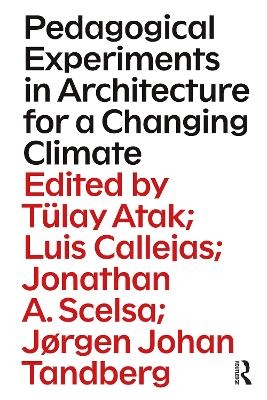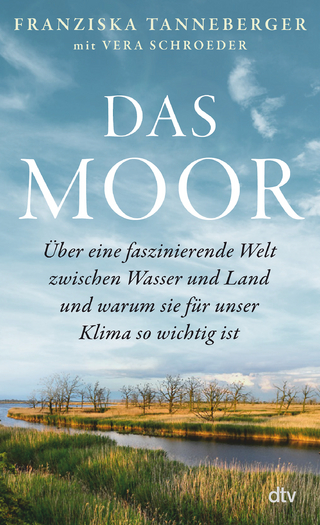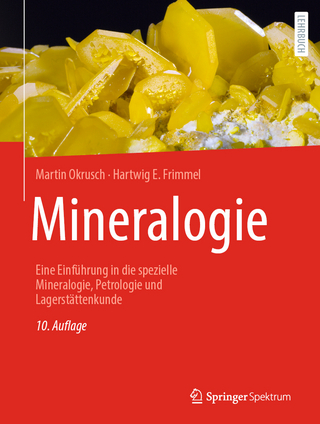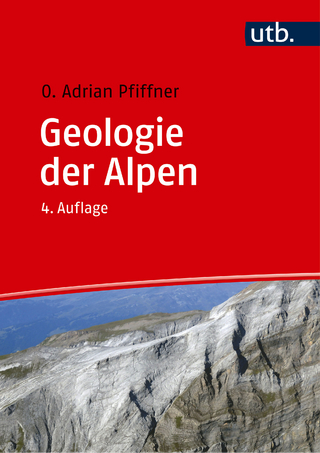
Pedagogical Experiments in Architecture for a Changing Climate
Routledge (Verlag)
978-1-032-39810-5 (ISBN)
This book presents a series of pedagogical experiments translating climate science, environmental humanities, material research, ecological practices into the architectural curriculum.
Balancing the science and humanities, it exposes recent pedagogical experiments from renown educators, while also interrogating a designer’s agency between science and speculation in the face of climate uncertainty. The teaching experiments are presented across four sections: Abstraction, Organization, Building, and Narrative, exposing core parts of an architect’s education and how educators can simultaneously provide fundamental skills and constructive literacy while instigating environmental sensibilities. Chapters cover issues such as an unstable hydrosphere, water infrastructure, remediating materials, methods of disassembly and adaptive reuse, as well as constructing new aesthetic categories of climate change, and implementing oral histories of construction, among many others.
Written and edited by expert design educators actively engaged in experimenting in new forms of pedagogy, this book will be of great use to architecture instructors at all levels looking to renew their teaching practices to more directly address the climate emergency. It will also appeal to those academics across the built environment interested in the ways design can affect and adapt to climate change.
Tulay Atak is an architect and an architectural historian. Her work focuses on questions of modern urbanism in a global context. She received her Bachelor's degree at METU in Ankara, Turkey and pursued her PhD at UCLA with the dissertation, "Byzantine Modern: Displacements of Modernism in Istanbul." In addition to her dissertation, she pursued research in India and Switzerland. She conducted fieldwork in Chandigarh as part of the Getty Research Institute's project on Museology and the Colony. Recently, she worked as part of a team of scholars archiving the work of the structural engineer Heinz Isler for the ETH in Zurich. Tulay's scholarship has appeared in journals and edited volumes such as OASE, Future Anterior, PMLA, JAE, JSAH, Invention d'une Architecte, Construction Savante and Fragile City. She has taught at SCI-Arc, Cornell, RISD, Cooper Union, RPI and Pratt Institute, and has held a guest professorship in architectural theory at the Angewandte in Vienna. Luis Callejas is Professor at the Oslo School of Architecture and Design and founder of LCLA office, an Architecture and Landscape architecture practice based in Oslo, Norway. Callejas taught architecture and landscape architecture at the Harvard Graduate School of Design, Architecture at Yale as visiting Louis Kahn assistant professor, Escola da Cidade in Sao Paulo, and was visiting professor in Urban Design at the University of Toronto. In 2020 Callejas was the recipient of the Patrik Geddes fellowship at the University of Edinburgh. Callejas has also been a frequent lecturer and guest critic at ETH Zürich, USI Mendridisio and MIT among others. His completed works include the Aquatic center for the IX South American games in Medellín and the renovation of the main stadium in Bogotá. Callejas has been nominated to the Royal Academy Dorfman award in 2022 and 2023, the Mies van der Rohe prize for architecture in Europe and the Mies Crown Hall for Architecture in the Americas. In 2016 Callejas was finalist in the Rolex mentor and protege arts initiative, and in 2013 winner of the Architectural league of New York award for young architects. Jonathan A. Scelsa is an Associate Professor of Architecture at Pratt Institute and he is a founding partner of the New York based practice, OP – Architecture Landscape. Jonathan’s research explores the geometric legacy of optical mechanics, the contemporary robotic production of component-based construction, and the reorganization of the city around visible micro infrastructural elements. Jonathan’s design work has been supported by several institutions including the American Academy in Rome, the New York State Council of the Arts (NYSCA); the Architectural League of New York; and the Department of State’s Fulbright Program. As an educator, Jonathan has taught widely including Masters design studios and seminars in Architecture at the University of Pennsylvania School of Design, the Rhode Island School of Design, Northeastern University, Parsons School of Design, the Boston Architectural College, City College of New York and the Harvard GSD. Jørgen Johan Tandberg is an associate professor at the Institute of Architecture. He received his diploma with honours from the Architectural Association School in London, and subsequently studied architecture and urbanism at the Berlage Institute in Rotterdam. In addition to writing a PhD in architectural history at the Oslo Centre for Critical Architectural Studies (OCCAS), he runs a small practice which has been awarded in various architecture competitions. He is the founder of Arkitektfaglig Presse, an independent publisher based in Oslo.
Section I: Abstraction. Section introduction 1. Experimenting with Dynamic Models : Expanding intuition for spatio-temporal Processes 2. Constructing New Aesthetic Categories of Climate Change 3. Deep Time and Architecture: Restoring Connections between Architecture and Environment Implications 4. Matter and Energy Over Nature and Climat; Approaching Architecture as a Science of Spatial Composition Section II: Organization. Section introduction 5. Unstable Waters : Rethinking design pedagogy to address the instability of the Hydrosphere 6. Solar Sculpting : Investigating the relationship between building Form and Energy Performance 7. Palm House : Investigating the distribution of industrial horticulture in Architecture buildings 8. The Water Dilemma : Descaling water infrastructure Section III: Building Section introduction 9. Natural Building Materials in Architecture Pedagogy : Challenging Conventions Hands on 10. Thermally Active Concrete : Researching remediating Materials 11. Airscapes: Constructing with Dynamic Pneumatics and the ecology of air 12. Material Circulation by Design: From Mining Modernism to Radical Reuse Section IV: Narratives. Section introduction 13. Moving Narratives: Design Pedagogies and Nomadic-Pastoralist Traditions 14. Built Environment as Palimpsest : Disassembly, Reassembly, Recycling, towards experimental Preservation 15. A Theory of Architecture Through the Geologic-Atmospheric Axis, or, Sections as Axis Mundi and Cosmograms 16. Doubt, Rapture, Power and Knowledge: A Four-Part Reflection on Architectural Education Coda: Elephant in the Room: A Fable for Tomorrow
| Erscheinungsdatum | 24.01.2024 |
|---|---|
| Zusatzinfo | 24 Halftones, color; 73 Halftones, black and white; 97 Illustrations, black and white |
| Verlagsort | London |
| Sprache | englisch |
| Maße | 156 x 234 mm |
| Gewicht | 560 g |
| Themenwelt | Naturwissenschaften ► Geowissenschaften ► Geografie / Kartografie |
| Technik ► Architektur | |
| ISBN-10 | 1-032-39810-8 / 1032398108 |
| ISBN-13 | 978-1-032-39810-5 / 9781032398105 |
| Zustand | Neuware |
| Informationen gemäß Produktsicherheitsverordnung (GPSR) | |
| Haben Sie eine Frage zum Produkt? |
aus dem Bereich


